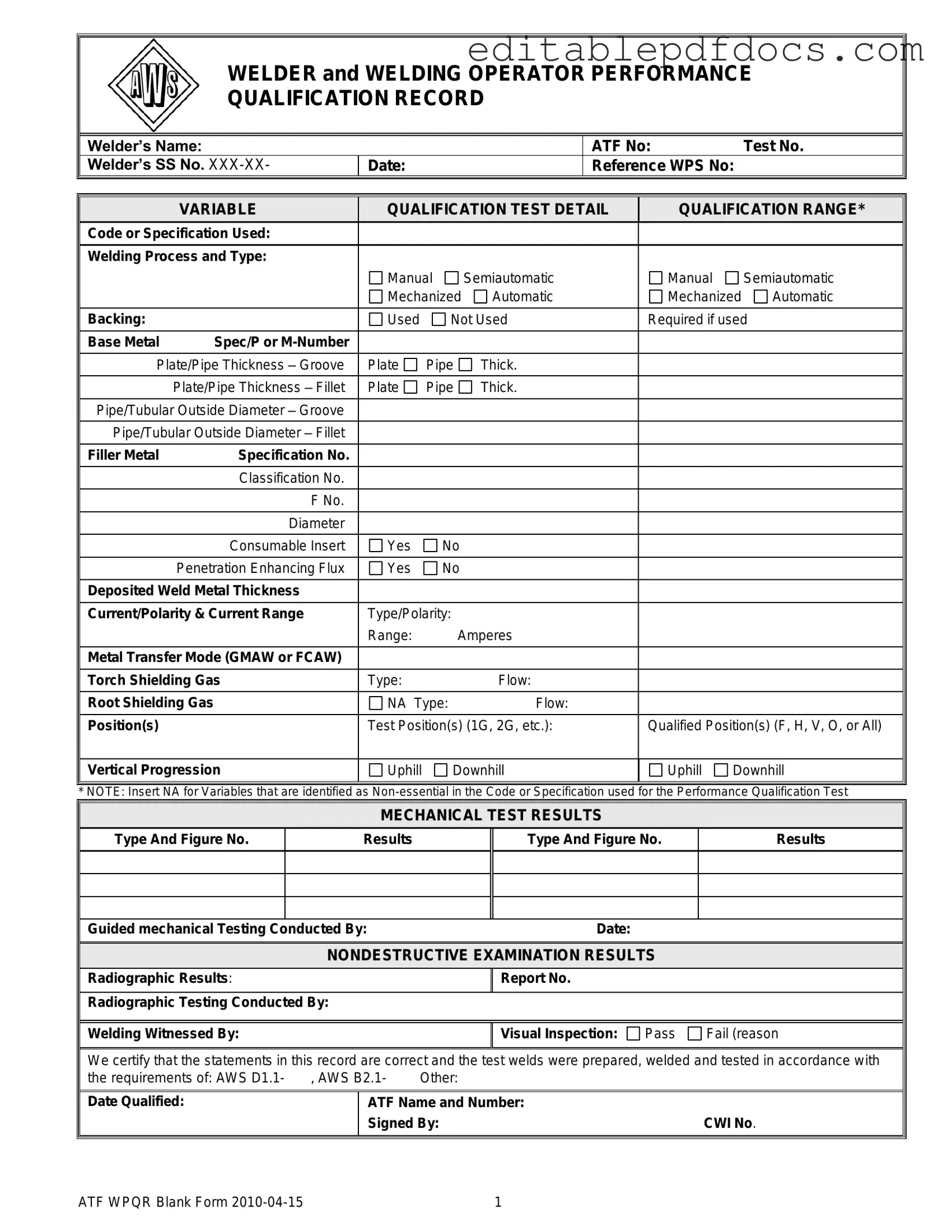Filling out the Welder Performance Qualification Record form accurately is crucial for ensuring compliance and validation of welding skills. However, several common mistakes can lead to issues down the line. One frequent error is omitting the welder's name or incorrect entry of the ATF number. This information is essential for identifying the welder and linking their qualifications to the specific test.
Another common mistake involves the incorrect selection of the welding process and type. The form requires precise categorization as manual, semiautomatic, mechanized, or automatic. Misclassifying the welding process can invalidate the qualification and cause significant delays in certification.
People often neglect to provide complete details about the base metal specifications. Failing to include the P or M number can lead to confusion regarding the materials used, which is critical for evaluating the weld's integrity. Additionally, not indicating the thickness of the plate or pipe can result in misinterpretation of the qualification range.
Inaccuracies in the filler metal specification can also be problematic. It is essential to include the correct classification number and diameter of the filler metal. Missing or incorrect data in this section may affect the performance evaluation and subsequent approvals.
Individuals frequently overlook the importance of documenting the mechanical test results. This section should reflect accurate results from guided mechanical testing. Incomplete or missing test results can undermine the credibility of the qualification record.
Not specifying the position(s) tested and qualified is another mistake that can have serious implications. The form must clearly indicate the test and qualified positions, such as 1G, 2G, or others. Inconsistencies here can lead to questions about the welder's capabilities in different orientations.
Many people fail to include the non-destructive examination results. This section is vital for confirming the quality of the welds. Omitting this information can raise red flags during audits or reviews, potentially jeopardizing the welder's qualification.
Finally, signatures and dates are often missing or incorrectly filled out. The certification of the record requires the appropriate signatures, including the Certified Welding Inspector (CWI). A lack of proper documentation can result in the qualification being deemed invalid.
